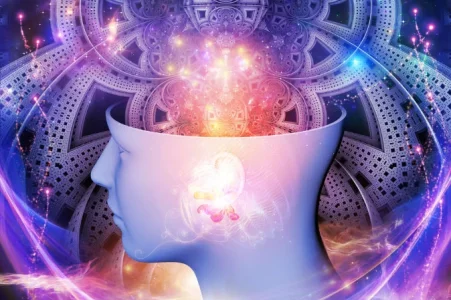muir
Banned
- MBTI
- INFJ
http://www.theepochtimes.com/n3/605...piritual-phenomena-exist-in-other-dimensions/
Astronomer Says Spiritual Phenomena Exist in Other Dimensions
By Tara MacIsaac, Epoch Times | April 7, 2014

Astronomer and mathematician Bernard Carr theorizes that many of the phenomena we experience but cannot explain within the physical laws of this dimension actually occur in other dimensions.

Bernard Carr (Wikimedia Commons)
Albert Einstein stated that there are at least four dimensions. The fourth dimension is time, or spacetime, since Einstein said space and time cannot be separated. In modern physics, theories about the existence of up to 11 dimensions and the possibility of more have gained traction.
Carr, a professor of mathematics and astronomy at Queen Mary University of London, says our consciousness interacts with another dimension. Furthermore, the multi-dimensional universe he envisions has a hierarchical structure. We are at the lowest-level dimension.
“The model resolves well-known philosophical problems concerning the relationship between matter and mind, elucidates the nature of time, and provides an ontological framework for the interpretation of phenomena such as apparitions, OBEs [out-of-body experiences], NDEs [near-death-experiences], and dreams,” he wrote in a conference abstract.
Carr reasons that our physical sensors only show us a 3-dimensional universe, though there are actually at least four dimensions. What exists in the higher dimensions are entities we cannot touch with our physical sensors. He said that such entities must still have a type of space to exist in.
“The only non-physical entities in the universe of which we have any experience are mental ones, and … the existence of paranormal phenomena suggests that mental entities have to exist in some sort of space,” Carr wrote.
The other-dimensional space we enter in dreams overlaps with the space where memory exists. Carr says telepathy signals a communal mental space and clairvoyance also contains a physical space. “Non-physical percepts have attributes of externality,” he wrote in his book “Matter, Mind, and Higher Dimensions.”
He builds on previous theories, including the Kaluza—Klein theory, which unifies the fundamental forces of gravitation and electromagnetism. The Kaluza—Klein theory also envisions a 5-dimensional space.
In “M-theory,” there are 11 dimensions. In superstring theory, there are 10. Carr understands this as a 4-dimensional “external” space–meaning these are the four dimensions in Einstein’s relativity theory–and a 6- or 7-dimensional “internal” space–meaning these dimensions relate to pychic and other “intangible” phenomena.
Astronomer Says Spiritual Phenomena Exist in Other Dimensions
By Tara MacIsaac, Epoch Times | April 7, 2014

Astronomer and mathematician Bernard Carr theorizes that many of the phenomena we experience but cannot explain within the physical laws of this dimension actually occur in other dimensions.

Bernard Carr (Wikimedia Commons)
Albert Einstein stated that there are at least four dimensions. The fourth dimension is time, or spacetime, since Einstein said space and time cannot be separated. In modern physics, theories about the existence of up to 11 dimensions and the possibility of more have gained traction.
Carr, a professor of mathematics and astronomy at Queen Mary University of London, says our consciousness interacts with another dimension. Furthermore, the multi-dimensional universe he envisions has a hierarchical structure. We are at the lowest-level dimension.
“The model resolves well-known philosophical problems concerning the relationship between matter and mind, elucidates the nature of time, and provides an ontological framework for the interpretation of phenomena such as apparitions, OBEs [out-of-body experiences], NDEs [near-death-experiences], and dreams,” he wrote in a conference abstract.
Carr reasons that our physical sensors only show us a 3-dimensional universe, though there are actually at least four dimensions. What exists in the higher dimensions are entities we cannot touch with our physical sensors. He said that such entities must still have a type of space to exist in.
“The only non-physical entities in the universe of which we have any experience are mental ones, and … the existence of paranormal phenomena suggests that mental entities have to exist in some sort of space,” Carr wrote.
The other-dimensional space we enter in dreams overlaps with the space where memory exists. Carr says telepathy signals a communal mental space and clairvoyance also contains a physical space. “Non-physical percepts have attributes of externality,” he wrote in his book “Matter, Mind, and Higher Dimensions.”
He builds on previous theories, including the Kaluza—Klein theory, which unifies the fundamental forces of gravitation and electromagnetism. The Kaluza—Klein theory also envisions a 5-dimensional space.
In “M-theory,” there are 11 dimensions. In superstring theory, there are 10. Carr understands this as a 4-dimensional “external” space–meaning these are the four dimensions in Einstein’s relativity theory–and a 6- or 7-dimensional “internal” space–meaning these dimensions relate to pychic and other “intangible” phenomena.





